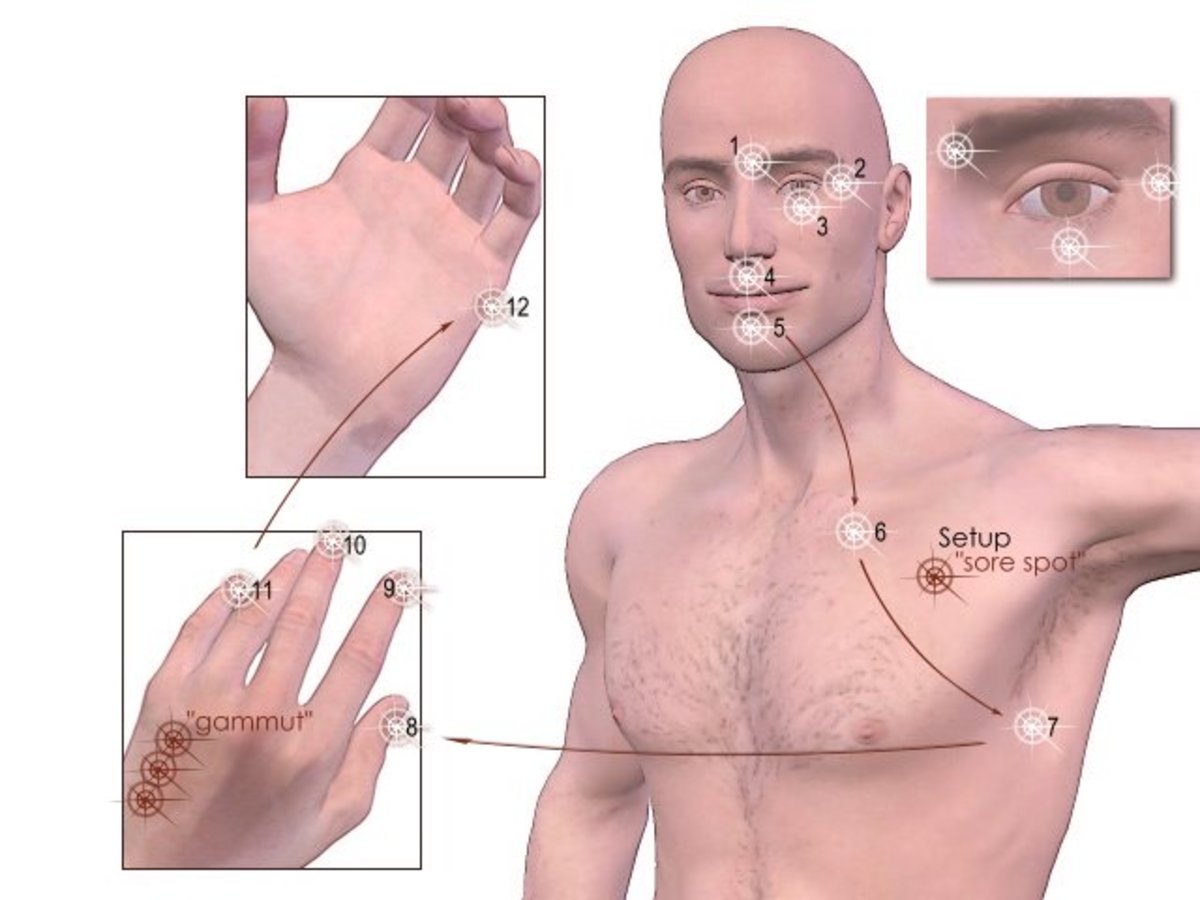- HubPages»
- Health»
- Personal Health Information & Self-Help»
- Mentally & Emotionally Balanced Living
Emotional Memory - Take Control of Your Thought Process

Emotions are the rollercoaster of life. They take you up and down with a range of feelings that cause certain reactions. This especially happens when one is reminiscing and thinking of something that happened and caused a certain emotion. Whether it’s good or bad, a reaction takes place which can usually lead to another occurrence; if it’s a good memory it can bring a smile and put you in a positive mood for the rest of the day. Unfortunately for a lot of people, this thinking process usually takes place with negative emotions. A tragic event that took place during childhood, the death of a loved one, a car accident or a major disappointment of a friend are prime examples. Each time you think back on these negative memories, your thinking process is often left scarred. Your ability to learn, retain information, and communicate effectively is effected by the way you process bad memories. Fortunately, there are effective ways to turn it around – it depends on the choices you’re willing to make to accept things that have happened and let them have zero effect on you and who you are today.

What is emotional memory?
Emotional memory is one of two ways your brain functions. One part is dealing with factual information and the other deals with the emotional part of an event. Our brains basically have organized memory files that not only contain the details of the day, time or location of an event; it also has the emotional detail of the event. Every time an event is remembered, the emotion associated with the event is triggered which causes joy, pain, or even something in between. Do you remember where you were on 9/11? What about when the Space Challenger exploded in mid-air? Name five songs from your favorite music group/artist. What kinds of emotions are associated with your responses to these questions?
So in essence, many things are maintained by the brain because of the emotions associated with it, not just for detail alone. For example, I don’t recall how many times my family and I attended church for Sunday services, but I vividly remember one Sunday we were getting ready for church, and my brother, who was only 1 year old at the time, got burned by an iron that was left plugged in and within his reach. For years, I shuddered every time I thought about it because of the emotional details associated with the event. Everyone heard a painful shriek, ran to see what happened and saw that the iron slid down the side of his face, taking off a layer of skin and exposed the red flesh on his little cheek. My mom was hysterical and my dad rushed to get his son to the hospital. Naturally, everyone was one edge and feared for my brother’s well-being as my mom tried her best to comfort him during the ride to the hospital. Even though he was treated and is doing fine now (the scar disappeared completely over the years), needless to say it was a traumatic event for the entire family which brought tears anytime it was recalled.

Emotions and Your Senses
Our five senses – smell, taste, hearing, sight and touch, are all triggers for emotions to manifest. The smell of a certain perfume may remind you of someone you used to date and all the memories associated with that come flooding in. The point of this information is to show the brains capability to create an amazing filing system of your memories and emotions. Although senses are very powerful at pulling files, remember that emotions also pull files and can have a continuous effect without stopping. If you’re spring cleaning your home and come across an old photo of someone that has hurt you in the past, the emotions will keep presenting themselves – as long as that file stays out. So it depends on what you do with the file once its pulled. If you continue to pay attention to it and not put it away, you’ll have another negative flashback.

Relationships
Emotions that have been filed away aren’t triggered in any other area of life than in relationships. Whether it’s a marriage, a good friend, or a co-worker, emotions rear themselves the most in these relationships once they’ve been triggered. A lot of the times the person doesn’t even realize there is a file on a certain emotion until something happens and they react. At times you’ll have a bitter fight with someone close to you and the fight may not even make sense. You’ve expressed emotions you didn’t realize were there and the person is saying things that easily upset you. You’ll know a file has been pulled because the emotions or mood do not fit the current situation. A couple may fight over one person in the relationship not being able to go hang out with their friends because the other has a problem with it. There are feelings of jealousy and insecurity that was filed into the mind from a previous relationship and now has been triggered because someone wants to go hang out with their friends. No one is being heard during this fight since there is a huge communication block – as long as the file is being held up and acknowledged, no real communication can take place.
Unfortunately, it seems like the negative emotions take control of the situation and overshadow original intentions of a conversation or situation at hand. This happens all the time, files from childhood, bad relationships and past hurts tend to present themselves in relationships – particularly marriages. There is no one that wants to remain in this type of cycle, especially in relationships that they want to work out. Steps can be taken to eliminate some files and re-create new ones. We have the capability to make these changes.
Take control of your mind and clean out the memory file cabinet
Do a self-check. Do you really need to stay mad at that one co-worker who ticked you off last year at the company Christmas party? Not really. Do a mental spring cleaning. Some things that may have infuriated you a year ago may be silly to you now if you think about it. Let some of the files tied to anger, jealousy, and resentment go! I’ve mentioned this before, your health pays the price in the long run and you don’t want that to happen. Remember, emotional memory is a chemical process conducted by the brain. Any imbalance of your brain’s chemical can affect you in these areas:
- Mood
- Physical energy
- Sexual Interest
- Sleep (waking up in the middle of the night)
- Toxic thoughts (guilt, dying, accidents)
Some files simply do not go away, but that doesn’t mean the emotions related to the file have to stick around. Time may be a factor in eliminating the emotions and having the facts remain. WE see this all the time when a world war veteran recalls events that took place during combat. They can talk about what happened in a factual sense, but they do not carry much emotion with it like they may have done earlier in their lives.

Types of brain memory functions
Type
| Function
| Example
|
|---|---|---|
Implicit
| memory of emotions connected to an experience
| Remembering how to drive
|
Explicit
| includes details of the experience
| What you were wearing on the day you were involved in an accident
|
Take steps to outweigh the negative with positivity
There are several steps you can take to better manage emotional memory in your life. Are you ready to let certain things go? Where do you want to be emotionally? Are you ready to accept healing from old wounds? These are questions you need to ask yourself before doing the following:
- Identify how your emotional memory and files work – remember each of us has a file system of emotions that constantly have our brains at work. With our senses at work, a file can be pulled in an instant and link itself to places, things, and people.
- Re-label certain files so that they can be associated with other emotions – believe it or not, your brain does what you tell it to do! The story I mentioned about my brother's accident earlier is a good example. Initially, the emotional memory was tragic and sad, but over the years we were able to associate that day with other emotions by using humor to dilute the negative aspect of it. After being treated at the hospital, my brother was the apple of everyone's eye in that hospital and kept the staff entertained until it was time for him to be released. We often recall those moments when we think back on that day. The negative emotions took a back seat to the humorous side of the memory.
- Always keep the positive happy memory files at the forefront of your mind – this may be easier said than done, but it’s possible. Even when a bad emotion is triggered during the day, it’s only or a moment so follow up by reminiscing on something good that happened or the vacation you’ve planned for next month. This will help keep you in a better mood.
- Regroup certain types of files – over the years, we’ve all had our fair share of bad memories such as toxic relationships, bad childhood, being fired from a job, etc. Why not just group all of those occurrences into one file, label it and put it away? If you went through certain experiences for a number of years, label it “The crazy times that are done and over with” and move on.
- Practice triggering positive memories – sometimes those old photos can help you recall happy times or a funny event. It’s okay to look back in this case.
- Create new files – this step relates to my previous post on creating one’s self. You can create a new mindset to control what you decide to react to. Remember, it’s okay to daydream and think about something that makes you smile
Take Your First Step Towards Healthy Emotional Memory
References
Carver, J.M. (2014). Emotional Memory Management: Positive Control Over Your Memory. Retrieved from http://www.drjoecarver.com/clients/49355/File/Emotional%20Memory.html
Lamia, M.C. (2012) Intense Emotions and Feelings. Psychology Today. Retrieved from http://www.psychologytoday.com/blog/intense-emotions-and-strong-feelings/201203/emotional-memories-when-people-and-events-remain-yo
Richards, J.M. & Gross, J.J. (2005). Personality and emotional memory: How regulating emotion impairs memory for emotional events. Journal of Research in Personality. Retrieved from http://spl.stanford.edu/pdfs/Personality%20and%20Emotional_IP.pdf










